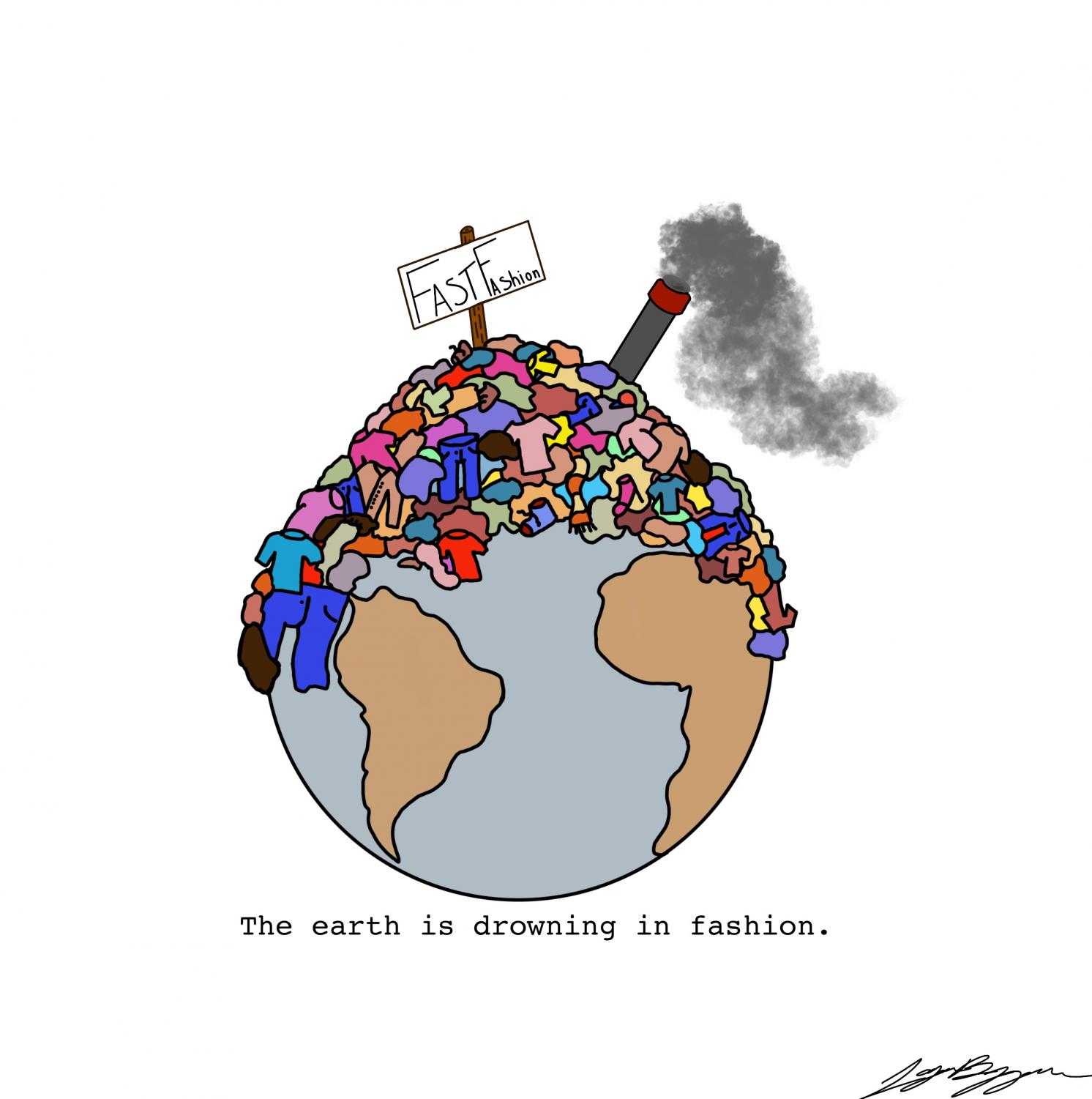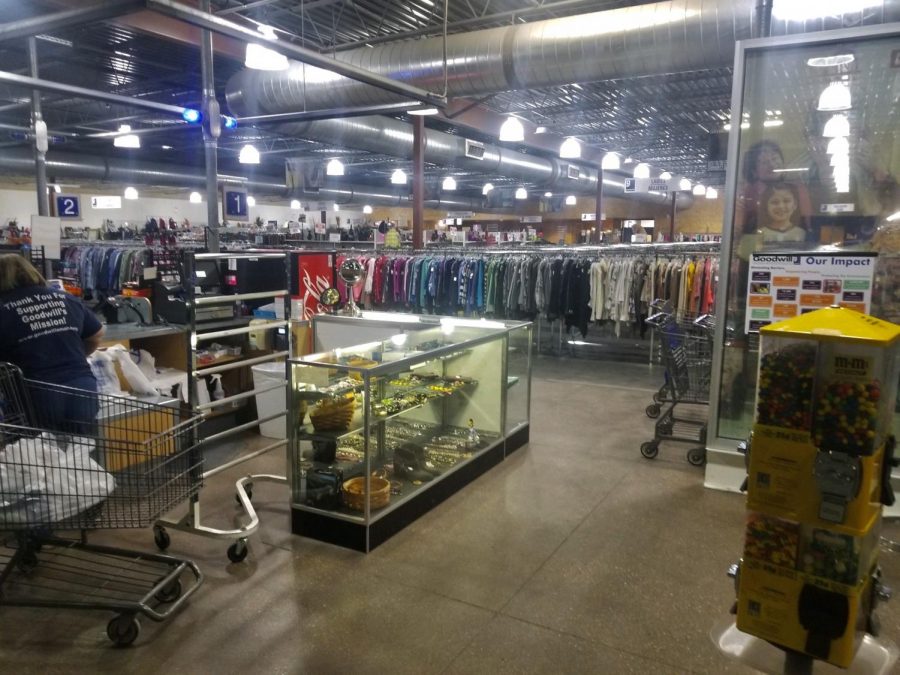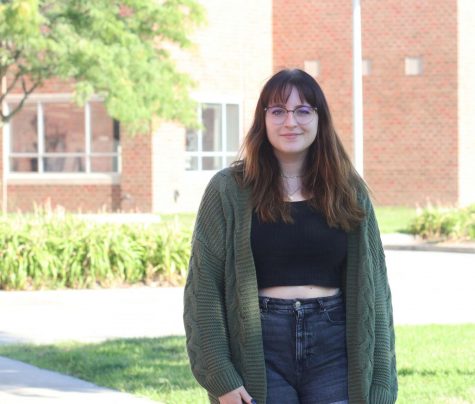Truth about thrifting
The benefits of shopping at resale stores
Local Goodwill located near Millard west winding down for the night. Trends on social media are responsible for the rise in the popularity of shopping at thrift stores. The cheap prices and wide inventory attract teens to the stores, but there are more unseen benefits of shopping at thrift stores.
January 31, 2020

Recent trends have attracted more and more teens to thrift stores to find fashion at an affordable price. Thrift stores offer second-hand fashion at cheap prices. Their stock only comes at the expense of people who decide to sell or donate their clothes to the stores. With the vintage and unexpected finds available at stores, thrift stores benefit more people than just the consumer. The rise in popularity of thrifting promotes an eco-friendly way of life and supports the community.
Thrift stores like Goodwill and Plato’s Closet are placed conveniently within communities making them accessible to many people. Just in my area, I could easily go to three different stores. This makes it easier to clear up closet space by donating or selling clothes and to shop at second-hand stores.
The act of donating to the thrift stores helps the environment more than one may think. Affinity Magazine states that Americans send an average of 10.5 million tons of clothing to landfills. This is a huge amount of clothes that are completely wasted and doomed to landfills. According to the One Green Planet, buying and donating to thrift stores reduces the number of clothes building up in landfills. Even if the clothes donated aren’t suitable for purchase, they are sent to material recycling to be reused in a different way. Donating to thrift stores recycles clothing in an easy way that helps clear the closet, the environment, and the lucky person who purchases the clothes. Knowing that items someone cared for once get to be reused and aren’t ruining the environment is comforting to me.
Environmentally, thrifting has even more benefits. The more people thrift, the fewer emissions from clothing factories are produced. Fast fashion brands like H&M and Forever 21 are toxic for the environment and use unethical means to make their cheap products. Affinity Magazine states, fast fashion requires harmful emissions from factories on the other side of the world and human labor that isn’t ethical. Knowing where my clothes come from and how they are made matter to me. Buying clothes from fast-fashion companies funds their exploitation of child labor and unethical ways. The quality of their products is low and isn’t worth the pain they cause people and the environment.
Unlike fast fashion, purchasing second-hand clothes don’t require the factory fumes to create the product and to ship it. According to Livescience, reducing emissions from factories can reduce the amount of greenhouse gasses in our atmosphere. In the long run, this is a big deal for our environment. The reduction of greenhouse gases can lead to the prevention of climate change. So even on a global scale, thrifting has its perks.
Nevertheless, thrifting is convenient for the buyer. They have a wide inventory filled with many items ranging in style, size and age all for a relatively cheap price. The True Activist states that the items purchased are 50% cheaper than the retail prices. In my experience, I have bought items at thrift stores that are higher quality than at retail stores for a fraction of the price. Thrift shops are great places to go buy items and clothing without breaking the bank.
Furthermore, the donation-based nature of thrift stores makes the experience even better. Donations are received almost every day so the inventory changes constantly. Stores can even carry expensive and high-end items for the thrift store price. The cheap prices of the items don’t sacrifice the quality of the clothing. Every time I take a trip to Goodwill their aisles are stocked with new clothes and items waiting to be searched through. Part of the excitement of thrifting comes from the unexpectedness and the variety in each store.
In the end, thrifting is the most ethical and inexpensive way to fill any closet. Choosing to shop at resale and thrift stores benefits individuals and the world.







